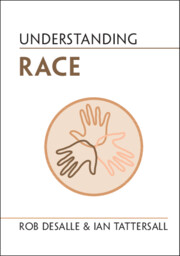Book contents
- Understanding Race
- Series page
- Understanding Race
- Copyright page
- Reviews
- Dedication
- Contents
- Foreword
- Preface
- Acknowledgments
- 1 The Evolutionary Background
- 2 Race before Evolutionary Theory
- 3 Race after Darwin
- 4 Race in the Era of Genetics and Genomics
- 5 Variation among Genomes, and How Humans Took over the World
- 6 Clustering and Treeing
- 7 Race in Medicine and Complex Phenotypic Studies
- 8 Human Adaptations
- 9 Science, Pseudoscience, and Race
- Summary of Common Misunderstandings
- References and Further Reading
- Figure Credits
- Index
- References
References and Further Reading
Published online by Cambridge University Press: 17 June 2022
- Understanding Race
- Series page
- Understanding Race
- Copyright page
- Reviews
- Dedication
- Contents
- Foreword
- Preface
- Acknowledgments
- 1 The Evolutionary Background
- 2 Race before Evolutionary Theory
- 3 Race after Darwin
- 4 Race in the Era of Genetics and Genomics
- 5 Variation among Genomes, and How Humans Took over the World
- 6 Clustering and Treeing
- 7 Race in Medicine and Complex Phenotypic Studies
- 8 Human Adaptations
- 9 Science, Pseudoscience, and Race
- Summary of Common Misunderstandings
- References and Further Reading
- Figure Credits
- Index
- References
- Type
- Chapter
- Information
- Understanding Race , pp. 155 - 165Publisher: Cambridge University PressPrint publication year: 2022



